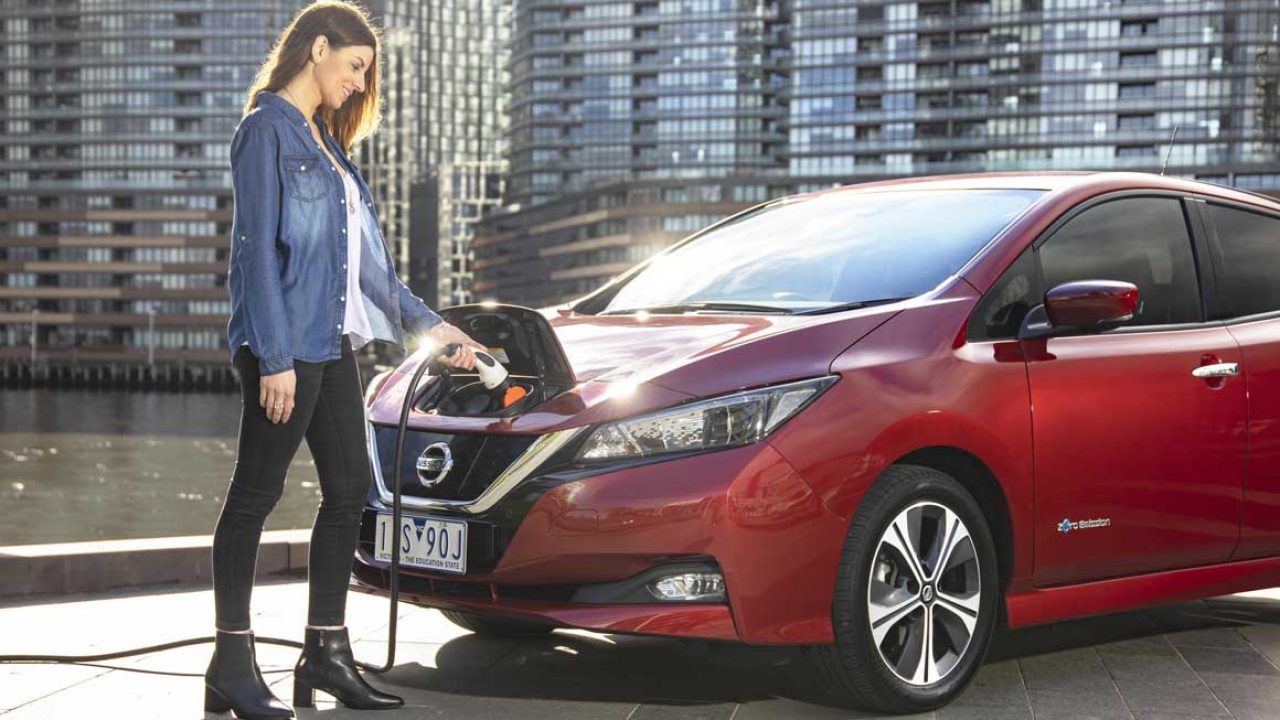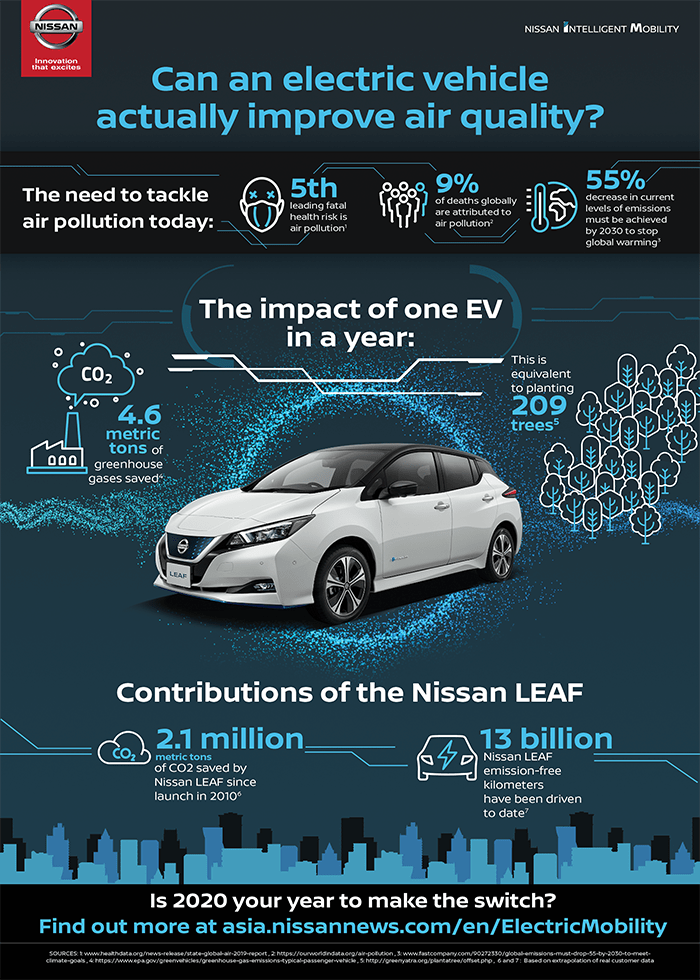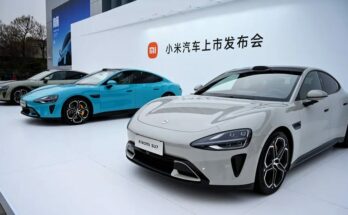In Asia and Oceania, approximately 4 billion people – 92% of Asia and the Pacific’s population are exposed to air pollution levels that pose a significant health risk.
Related: Electric Vehicle Policy and Possible Influx of EVs and LSEVs
This was further highlighted with the launch of the world’s largest real-time air quality data bank in February 2020 under the United Nations Environment Program (UNEP), indicating that much of the region remains on “unhealthy” air quality levels. In fact, air pollution is now globally the 5th leading cause of death among all health risks and 9% of deaths are attributed to it.
To address this as part of the commitment to reduce carbon dioxide (CO2) emissions, Nissan, the pioneers in creating mass produced electric vehicle (EV) the Nissan Leaf, has collected analysis of the impact the vehicle has had worldwide since debut in 2010.
At the same time, there is compelling data to demonstrate how electric mobility can be part of solutions to address air pollution levels:
- Just one EV can save 4.6 metric tonnes of greenhouse gases each year, which is equivalent to planting 209 trees.
- To date 460,000+ global Nissan Leaf owners have contributed to:
- Around 2.1 million metric tonnes of CO2 saved. To put that in context, more than 81 million trees are needed to process that much CO2 in a year.
- Over 13 billion emission-free kilometers driven by Nissan Leaf owners – the distance of driving to the moon more than 33,800 times!
Related: Advantages of Electric Vehicles
With a 55% reduction in current CO2 emissions needed by 2030 to halt global warming, 2020 could be the catalyst year of change for consumers making choices, like switching to EVs, to have a direct impact on air pollution.

A computer animation professional with over 23 years of industry experience having served in leading organizations, TV channels & production facilities in Pakistan. An avid car enthusiast and petrolhead with an affection to deliver quality content to help shape opinions. Formerly written for PakWheels as well as major publications including Dawn. Founder of CarSpiritPK.com






